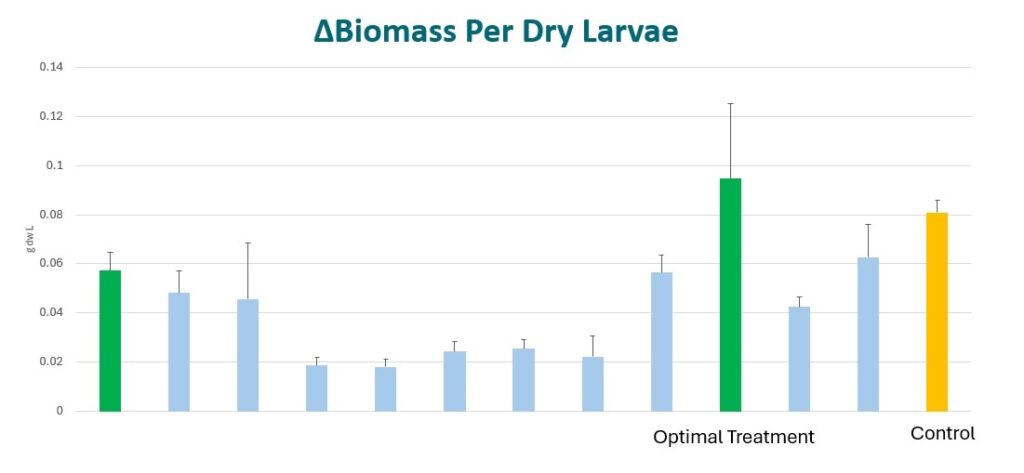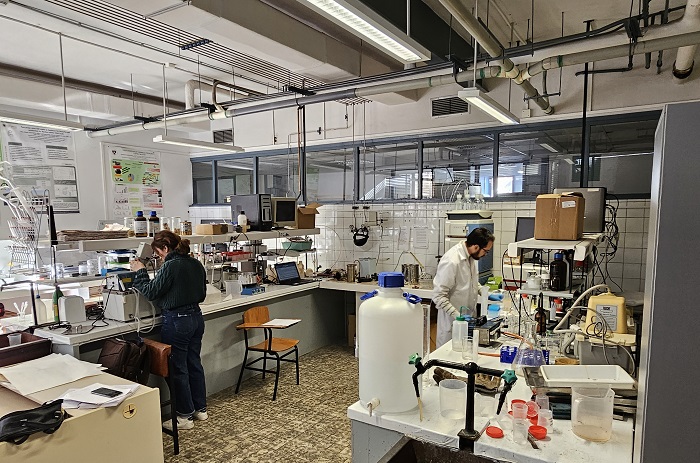During 2024 we’ve been working with the University of Granada to test how pre-treatment of waste can deliver the low carbon, high nutritional value products that our customers want to buy. We’ll continue working with them for the rest of the year and into 2025.
Specifically, we’ve been working with the department of soil science and agricultural chemistry, the department of chemical engineering and the department of microbiology there.
What Pretreatment of Olive Pomace have we been looking into?
Specifically, we’re looking at the “Pretreatment of Olive Pomace and Its Impact on the Survival and Bioconversion Rates of Black Soldier Fly Larvae (BSFL)”.
In plain language, this means working out how we can break down the lignin and cellulose within olive waste, to make it as digestible as possible by the larvae for the best possible nutritional outcome.
More than 100 different olive pomace pre-treatments have been tested so far. Pretreatment methods included mechanical, chemical, biological, and thermal treatments.
We can’t tell you exactly how we’ve made it work – this is a part of our secret sauce which is currently undergoing patent review.
But we’ve made it work.
What do we mean by ‘work’?
Well, our control is chicken feed. That is one of the livestock feedstuffs we want to displace/improve with our products. We wanted to match or beat the protein and nutritional content of the larvae that chicken feed can deliver. Chicken feed is not made of olive waste. Usually, it’s made up of soy and cereals, which have a significant environmental impact, that is much higher than olive waste.
Our results show our multi-stage pre-treatment process allows for larvae size greater than and like, chicken feed and other premium feed.

This is big news. This means we can prove that we can convert large volumes of waste into animal feed and petfood ingredient protein, which is the core of InsectBiotech’s business. By doing so using olive waste, the climate impacts and deforestation impacts are at least 90% lower.
We have a few different pretreatments we can use but the main aim is to have just one.
This work is showing exceptional results, in just six months.
It’s amazing what you can do when you invest in R&D.
What do our pretreament trial results mean?
These trial results mean our investors, customers and partners can celebrate with us. We’ve proven we can do what others have struggled to do: pre-treat waste at low cost, using natural treatments, so that our black soldier fly larvae can digest it, and grow into the products we want, that will help revolutionise how animal feed and petfood is produced.
Look at the chart above showing our results. Please contact InsectBiotech if you’d like to discuss investing in our business.
Next week we will be discussing this at the Alhambra Ventures event in Granada. Read our detailed post about IB being a finalist at Alhambra Venture for more information.
Huge thanks from us to Professor Alejandro Fernandez Arteaga from the department of Chemical Engineering. And, to Professor Deisi Altmajer Vaz, of the department of Chemical Engineering.
Professor Jesús Fernández Bayo, Department of Soil Science and Agricultural Chemistry, has led the work, and helped us show what is possible.
All the students that have worked with them on this too, have played a vital role in our ‘proof of concept’ of our business. A huge thank you to them.
